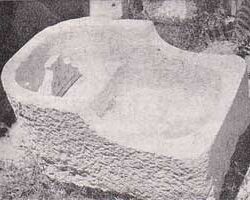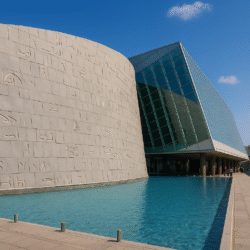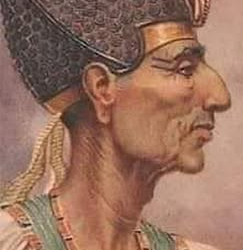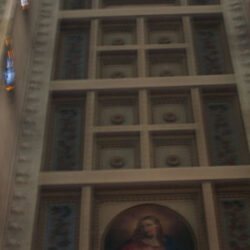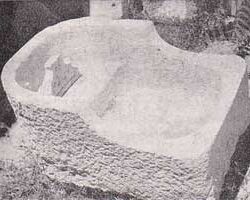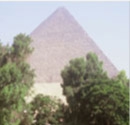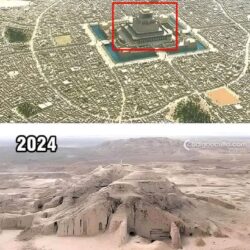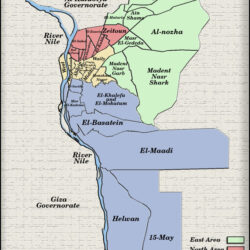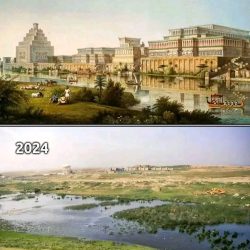The fascinating history, architecture, and cultural significance of the Al Shatby Monumental Tomb, the oldest known Ptolemaic tomb in Alexandria, Egypt.
Nestled in the vibrant district of El Shatby in Alexandria, just in front of Saint Marc College between Port Said Street and Corniche Avenue, lies an awe-inspiring relic of ancient Egypt—the Al Shatby Monumental Tomb. This multi-chambered crypt offers a glimpse into the city’s early funerary practices and Hellenistic influences, dating back to around 260 BC. For historians, tourists, and archaeology enthusiasts alike, it remains a profound link to Alexandria’s majestic past.
Key Information:
- Location: El Shatby, Alexandria, Egypt. Specifically, in front of Saint Marc College, between Port Said Street and the Corniche Avenue.
- Visiting Hours: 9:00 AM to 5:00 PM.
- Historical Significance:
- Part of the oldest cemeteries in Alexandria (eastern cemetery).
- Dates to the period shortly after Alexandria’s foundation (late 4th/early 3rd century BC).
- Discovered accidentally in 1893.
- Considered the oldest Ptolemaic tomb discovered in Alexandria.
- Dates primarily to the late 3rd to early 2nd century BC, with the core section from the first half of the 3rd century BC (c. 260 BC).
- Origin & Evolution:
- Originally constructed c. 260 BC as a private crypt for a family, patterned after an old Greek house (entrance, front room, back room).
- Later expanded in the late 3rd century BC into a public cemetery with additional burial chambers and rooms.
- Contains additions from later periods beyond its original construction.
Architectural Description:
- Structure:
- Cut into the bedrock.
- Multi-chambered tomb accessed via a rock-cut stairway.
- Designed to mimic a monumental Greek building centered around an open-air courtyard.
- Burial chambers and subsidiary rooms are arranged around this central court.
- Layout (Sequence):
- Entrance
- Leads to a horizontal hall
- Leads to another hall
- Leads to the central open court.
- Eastern side of the court leads to a front room.
- Front room leads to the main burial room.
- Features:
- Main Burial Chamber: Contains two rock-cut klinē (funerary couches/beds).
- Loculi: Other burial rooms feature long, narrow niches (loculi) cut into the walls for burials, sealed with slabs.
- Altar: The central court accommodated an altar for sacrifices.
- Decoration: Elaborate architectural decorations in the Greek style (main tomb).
- Lacking Feature: No well or cistern (common in later Ptolemaic tombs).
- Artifacts:
- Contains monuments from the Ptolemaic age.
- Most important finds: Tanagra statues (Note: “Tenagra” is likely a misspelling of “Tanagra”).
- Pots dating back to the 3rd century BC were found.
Burial Practices:
- Two Methods Used:
- First (Older) Method: Body laid out on a klinē (funerary bed/couch). Found in the main burial chamber (two examples).
- Second (Later) Method: Body placed in a loculus (wall niche), sealed with a slab. Found in other burial chambers added later.
Significance Summary:
The Al Shatby Monumental Tomb is the oldest known Ptolemaic tomb in Alexandria. It showcases the evolution of burial practices (from private elite klinē burials to public loculi burials) and funerary architecture (from a Greek house model to a larger complex around a courtyard) during the crucial early centuries of Ptolemaic rule in Alexandria. Its location near the conjectured ancient city walls marks it as part of the city’s earliest necropolis.
A Portal into Alexandria’s Hellenistic Past
Al Shatby Monumental Tomb is believed to be one of the earliest burial sites in Alexandria. Situated in the city’s eastern cemetery, this ancient necropolis likely came into use shortly after the city’s foundation by Alexander the Great in 331 BC. The tomb was accidentally discovered in 1893, revealing a time capsule that predates most known burial sites in the area.
What sets it apart is its architectural complexity and cultural synthesis, blending Greek and Egyptian funerary traditions. Archaeologists consider it the oldest Ptolemaic tomb in Alexandria, a title supported by its proximity to the presumed ancient city walls near the Mediterranean.
Architectural Marvel: A Greek House for the Dead
Unlike traditional Egyptian tombs, Al Shatby’s structure resembles an old Greek house. Visitors enter through a stairway carved directly into the rock, leading them down into a subterranean layout marked by a horizontal hallway, followed by another chamber and an open-air court.
Surrounding this central court are several burial rooms and auxiliary chambers, including a main burial room with two rock-cut klines, which served as funerary beds. These beds reflect a high level of craftsmanship and reverence for the deceased, modeled after the Greek style of reclining during banquets.
The open court also once housed an altar, indicating that ritual sacrifices were part of the burial ceremonies. Though many later Ptolemaic tombs included wells or cisterns, this particular tomb lacks such features—highlighting its antiquity and prototype status.
Two Distinct Burial Methods
Al Shatby Monumental Tomb provides insights into evolving burial customs during the Ptolemaic period. Two major burial techniques were used here:
- The Older Method: Laying the body on a rock-cut funerary bed or “kline.” These were likely reserved for individuals of higher status or wealth.
- The Newer Method: Utilizing loculi—long, narrow niches cut into the walls. These would be sealed with loculus slabs and used as tomb slots as the need arose, especially as the tomb expanded into a more public cemetery.
Expansion Over Time
Originally a private crypt, Al Shatby Monumental Tomb later underwent several expansions, adapting to the changing needs of the community. Over the centuries, more burial rooms and decorative features were added. Archaeologists have uncovered Ptolemaic-era pottery, notably dating to the third century BC, which supports the phased development of the site.
These additions reflect the tomb’s transition from a singular elite resting place to a shared necropolis, possibly for extended families or elite citizens of Alexandria.
Cultural Treasures Within
One of the most fascinating aspects of the tomb is its collection of Tanagra figurines—small terracotta statues from the Hellenistic period. These were often placed in tombs for ceremonial or decorative purposes, symbolizing beauty, fertility, and sometimes even the deceased’s identity or social role.
Additionally, the tomb’s architectural flourishes, such as Doric columns, friezes, and painted walls (many of which have faded), highlight the cross-cultural artistic expressions of the early Alexandrian period.
Location and Visitor Information
If you’re planning a trip to Alexandria, the Al Shatby Monumental Tomb is an unmissable heritage site.
- 📍 Address: El Shatby, in front of Saint Marc College, between Port Said Street and the Corniche Avenue.
- 🕘 Visiting Hours: 9:00 AM – 5:00 PM
It’s advisable to wear comfortable footwear, as you’ll be descending into a rock-cut structure. Guided tours are sometimes available, particularly through local heritage programs or university collaborations.
Why Al Shatby Monumental Tomb Matters Today
The tomb is more than just an archaeological site; it’s a historical narrative carved into stone. It encapsulates the blending of Egyptian and Greek cultures, the social hierarchies of ancient Alexandria, and the spiritual beliefs surrounding death and the afterlife.
With continuous discoveries and scholarly interest, Al Shatby helps to answer larger questions about life, death, and cultural identity in one of the Mediterranean’s most iconic cities.
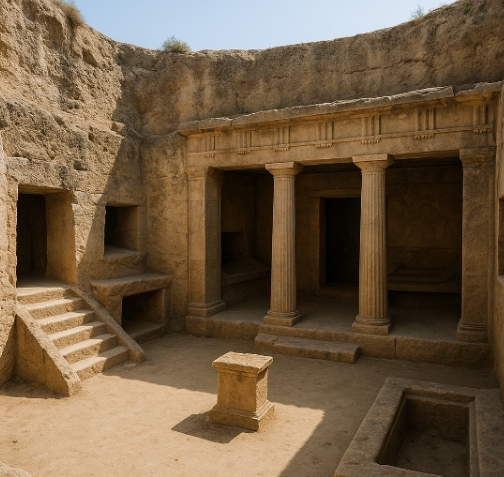
Frequently Asked Questions (FAQs)
1. What is the significance of Al Shatby Monumental Tomb?
It is the oldest known Ptolemaic tomb in Alexandria and provides insight into early Alexandrian burial practices, showcasing a blend of Greek and Egyptian cultural influences.
2. When was the Al Shatby Monumental Tomb discovered?
It was discovered accidentally in 1893 during urban development work in Alexandria.
3. How old is the Al Shatby Monumental Tomb?
The original structure dates back to around 260 BC, with some expansions made later in the third century BC.
4. What are the main features of the tomb?
Key features include a rock-cut stairway, open-air central court, burial rooms with klinai, loculi niches, and Tanagra figurines.
5. Can the public visit the tomb today?
Yes, it is open to the public daily from 9 am to 5 pm, located in El Shatby near Saint Marc College.
6. How were bodies buried in the tomb?
Two main methods were used: laying the deceased on funerary beds (klines) or placing them in wall-cut loculi sealed with slabs.
The Al Shatby Monumental Tomb stands as a majestic link between the living and the departed, reflecting the cultural fusion that made ancient Alexandria a beacon of civilization. For those fascinated by archaeology, history, or simply the profound artistry of the past, a visit to this tomb offers a timeless experience.
